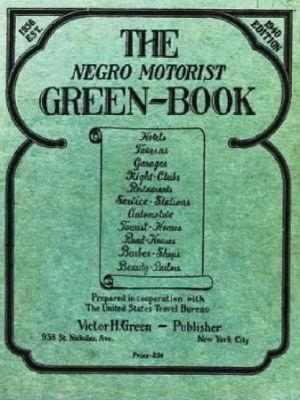How Did Blacks Travel During Segregation?
Share
Explore Our Galleries
Breaking News!
Today's news and culture by Black and other reporters in the Black and mainstream media.
Ways to Support ABHM?
From The Root
In 1936 a Harlem postal worker and activist named Victor H. Green decided to develop a guide that would help African Americans travel throughout the country in a safe and comfortable manner. The Negro Motorist Green Book (also called The Negro Travelers’ Green Book), often simply known as The Green Book,identified places that welcomed black people during an era when Jim Crow laws and de facto segregation made it difficult for them to travel domestically without fear of racial backlash.
The Green Book listed businesses and places of interest such as nightclubs, beauty salons, barbershops, gas stations and garages that catered to black road-trippers. For almost three decades, travelers could request (for just 10 cents’ postage) and receive a guide from Green. Eventually the guide expanded to encompass information about Canada and Mexico.
Like users of today’s popular recommendation sites such as TripAdvisor, travelers collected information during their journeys, which they shared with Green and his team of editors. The data were then incorporated into future editions. “Historically, The Green Book falls in line with the underreported activism of black postal workers and the heightened awareness of driving while black in certain regions of the country,” says Robert Smith, associate professor of African-American and civil rights history at the University of Wisconsin-Milwaukee [and Resident Historian and Board Member of ABHM]. “Although many think of this book in historical terms, the challenges facing black travelers then resonate with black travelers now, particularly as it relates to racial profiling and stop-and-frisk laws.”
Read more about Green Books here.
Experience this virtual Green Book exhibit here.
Comments Are Welcome
Note: We moderate submissions in order to create a space for meaningful dialogue, a space where museum visitors – adults and youth –– can exchange informed, thoughtful, and relevant comments that add value to our exhibits.
Racial slurs, personal attacks, obscenity, profanity, and SHOUTING do not meet the above standard. Such comments are posted in the exhibit Hateful Speech. Commercial promotions, impersonations, and incoherent comments likewise fail to meet our goals, so will not be posted. Submissions longer than 120 words will be shortened.
See our full Comments Policy here.










Fred Strother’s hotel, restaurant and night club were in the Green Book on 3rd Avenue in Williamson, West VA. It was also on what was called the Chitlin’ Circuit. Count Basie, Duke Ellington, Ray Charles and many other greats played & stayed there.